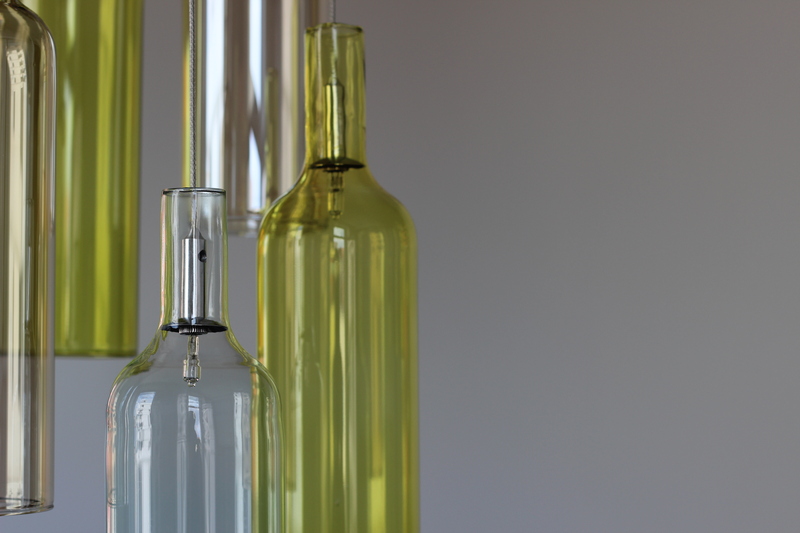Can We Mitigate the Impact of Microplastic Pollution?
Microplastic pollution is emerging as one of the most pressing environmental challenges of our time. These tiny plastic particles, measuring less than 5mm, have infiltrated virtually every corner of the planet--from the deepest ocean trenches to the air we breathe and the food we eat. With mounting evidence linking microplastics to harmful impacts on ecosystems and human health, the question arises: Can we truly mitigate the impact of microplastic pollution? This comprehensive article explores the origins of microplastics, their pervasive effects, and, most importantly, the strategies and solutions that individuals, industries, and governments can adopt to tackle this persistent threat.

Understanding Microplastic Pollution
What are Microplastics?
Microplastics are plastic fragments smaller than 5 millimeters in size. There are two main types:
- Primary microplastics: Manufactured at microscopic sizes for specific purposes, like microbeads in cosmetics or industrial abrasives.
- Secondary microplastics: Result from the breakdown of larger plastic items such as bottles, bags, and fishing nets due to environmental factors such as sunlight and wave action.
Sources of Microplastic Pollution
Microplastics enter the environment through numerous channels. Common sources include:
- Personal care products: Microbeads in facial scrubs and toothpaste
- Synthetic fabrics: Shed fibers when washing clothes made of polyester, nylon, or acrylic
- Vehicle tires: Tire wear particles released as vehicles drive on roads
- Industrial processes: Manufacturing pellets and abrasives
- Littering and improper waste management: Breakdown of discarded plastic items
Where Do Microplastics Go?
Once released, microplastics are transported by wind, rain, and rivers into soils, freshwater bodies, and the ocean. Studies have found microplastics in remote places like Arctic ice cores, Himalayan peaks, and deep-sea sediments. Their persistence and minute size enable them to infiltrate the food chain, starting from plankton and working up to humans.
The Far-Reaching Impact of Microplastic Contamination
Microplastics and Marine Life
The ocean is a major sink for microplastic pollution. Marine animals such as fish, seabirds, and whales often mistake these tiny particles for food. Ingestion can cause:
- Physical harm: Internal injuries, blockages, and reduced feeding
- Chemical pollution: Plastics absorb and transport toxins in the oceans, which can then accumulate in the tissue of organisms
- Disruption of the food chain: Biomagnification leads to harmful chemicals climbing up the food web, ultimately threatening human health
Human Health Concerns
Recent research has detected microplastics in human tissues, blood, and even placentas. While studies on long-term health impacts are ongoing, potential risks include:
- Physical obstruction or inflammation in human organs
- Leaching of toxic chemicals like phthalates and bisphenol A into the body
- Transfer of pathogens and heavy metals attached to plastic surfaces
Can We Reduce the Impact of Microplastic Pollution?
Innovative Solutions and Mitigation Strategies
Tackling the spread and impact of microplastics requires a comprehensive, multi-tiered approach. Below are some proven and promising methods to curb microplastic pollution:
1. Source Reduction: The First Line of Defense
The most effective way to reduce microplastic pollution is by addressing it at the source. This includes:
- Banning microbeads: Legislation in countries like the US, UK, and Canada has prohibited the use of microbeads in personal care products, resulting in a significant drop in primary microplastic pollution.
- Plastic product redesign: Switching to natural alternatives or biodegradable materials in manufacturing plastic products, especially single-use items.
- Policy-driven interventions: Implementing extended producer responsibility (EPR) laws to ensure manufacturers take responsibility for the lifecycle and disposal of plastics.
2. Waste Management and Recycling Improvements
Improved waste management systems are critical to prevent plastic litter from breaking down into microplastics. Key actions include:
- Enhanced recycling infrastructure: Investing in efficient collection, sorting, and recycling technologies.
- Waste-to-energy conversion: Converting non-recyclable plastics into fuel, though this should be used judiciously due to emissions concerns.
- Zero-waste policies: Promoting community-level circular economies to minimize plastic waste generation.
3. Innovations in Wastewater Treatment
Wastewater treatment plants are crucial nodes for microplastic mitigation, as they capture particles washed down the drain. Recent advancements include:
- Advanced filtration systems: Using sand filtration, membrane bioreactors, and nanotechnology filters to trap microplastics
- Retrofitting old plants: Upgrading existing wastewater facilities to improve microplastic capture rates
- Microfiber filters in washing machines: Installing devices that capture synthetic fibers released during laundry
4. Cleanup Campaigns and Environmental Remediation
While prevention is ideal, existing pollution also needs addressing:
- Beach and river cleanups: Mobilizing volunteers and organizations to manually remove macro- and microplastics from shorelines
- Innovative cleanup devices: Deploying floating booms and skimmers, such as those used by The Ocean Cleanup project, to intercept plastics before they fragment further
- Bioremediation: Investigating the use of microorganisms, enzymes, or fungi capable of degrading plastics in natural environments
5. Alternative Materials and Green Innovation
Reducing reliance on traditional plastics is central to mitigating the impacts of microplastic pollution. Alternatives include:
- Biodegradable plastics: Made from plant-based sources like cornstarch, designed to break down naturally under specific conditions
- Natural fibers: Using cotton, hemp, or bamboo instead of synthetic textiles
- Edible packaging: Food wraps and containers that are safe to consume or compost
6. Education and Consumer Awareness
Empowering the public with knowledge is essential for behavior change. Effective strategies involve:
- Eco-labels: Clear labeling to help consumers identify products free of microplastics or containing environmentally-friendly alternatives
- Public campaigns: Raising awareness about the effects of microplastic pollution and individual actions to reduce it, such as using microfiber-catching laundry bags or avoiding single-use plastics
- School curricula: Integrating environmental education into the classroom to foster future generations of eco-conscious citizens
The Role of Policy and Regulation
Global Responses to Microplastic Pollution
International cooperation is crucial for effective mitigation of microplastic impacts. Noteworthy developments include:
- United Nations Environment Assembly: In 2022, the UN adopted a resolution to forge a binding global treaty to end plastic pollution, including microplastics.
- Regional frameworks: Such as the European Union's Plastics Strategy and restrictions on intentionally-added microplastics in various products.
- National and local bans: Widespread bans on microbeads and single-use plastics in many countries, along with stricter waste management rules.
Challenges Ahead in Microplastic Mitigation
Limits of Current Technologies
While considerable progress has been made, certain obstacles hamper efforts to manage and mitigate microplastic pollution:
- Detection difficulties: Microplastics come in diverse shapes, sizes, and chemical compositions, making them hard to track and remove.
- Lack of biodegradability: Many alternatives to conventional plastics still take a long time to break down or may cause unintended environmental problems.
- Economic constraints: Upgrading infrastructure for waste management and water treatment is costly, especially for developing nations.
Research Gaps
More scientific studies are needed to:
- Fully understand the health risks of microplastics to humans and wildlife
- Develop scalable and safe plastic alternatives
- Find cost-effective and eco-friendly methods for large-scale removal of microplastics from the environment
How Can Individuals Help Reduce Microplastic Pollution?
Tackling microplastics isn't just the responsibility of governments or corporations--individual choices matter. Here's how you can contribute to micropollution mitigation:
- Use less plastic: Opt for reusable items, avoid single-use plastics, and choose alternatives like glass, metal, or biodegradable products whenever possible.
- Laundry practices: Use a laundry bag or filter to catch microfibers from synthetic clothes. Wash at lower temperatures and less often.
- Support legislation: Vote for and support policies that restrict microplastics and promote extended producer responsibility.
- Participate in cleanup efforts: Join local initiatives to help remove plastics from your community's parks, rivers, and beaches.
- Spread awareness: Educate friends and family about the threat of microplastic pollution and promote responsible consumer habits.

The Road Ahead: Hope for a Cleaner Future
The question "Can we mitigate the impact of microplastic pollution?" is not just rhetorical. With coordinated action across science, policy, industry, and everyday life, we can dramatically reduce the damage caused by these pervasive pollutants.
Innovations in materials science, advances in waste management, public engagement, and strong governmental action are already making a difference. As awareness spreads and collaborative solutions continue to develop, the future can hold a world where microplastic pollution is minimized--and its impact on ecosystems and human health is drastically reduced.
Conclusion: Taking Collective Action Against Microplastics
Mitigating microplastic pollution is a complex challenge, demanding urgent and sustained commitment from all sectors of society. Yet it is achievable. By prioritizing prevention, investing in scientific and technological innovation, enacting strong regulations, and fostering individual responsibility, we can turn the tide on microplastic contamination.
Together, we can protect our planet's biodiversity, safeguard public health, and ensure a cleaner, more sustainable world for future generations. The time to act against microplastic pollution is now--every small step counts towards a larger, global impact.